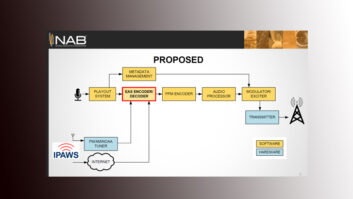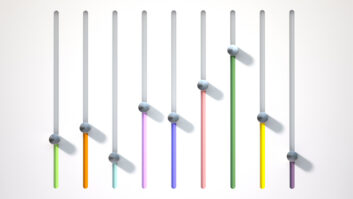The Radio World articles on expanding aural broadcasting into the spectrum of TV Channels 5 and 6, immediately below the FM band, raise a few comments.
You state that new entrants into that spectrum are proposed to be some AMs, some non-commercial FMs, LPFMs and etc. Then you talk about the delivery and modulation choices, opening this topic to other suggestions. I guess I must suggest the EU-147 model of wide-band COFDM modulation. Why? Let me count the reasons.
Spectrum efficiency, reliability, cost …
Assuming an EU-147 type multiplex, which is 1.5 MHz wide, carrying about 1.4 MBps data, the 12 MHz total specturm carries eight such multiplexes.
Current audio codec advances allow far more than six audio programs per multiplex. How many? Easy. What audio quality do you want? That is the only parameter affected by digital data rate with the EU-147 system. System reliability efforts, like redundant data, etc. are not needed in EU-147; that is taken care of in the wide-band multiplex COFDM and data interleaving (spectrum spreading).
Let’s just assume a factor of three, about 18 channels per multiplex, some wide-band and some narrow, yielding a gross of total channels (gross as in quantity, 144, not quality).
Spectrum efficiency will come from avoiding any of the current FM required separation distances necessary for Desired/Undesired courtour overlap avoidance. EU-147 COFDM modulation with its time guard interval (together with RF D/U protection) is designed from the start to allow a Single-Frequency Network (SFN) to be built and carry the same data on the same frequency from many transmitters to cover an area. As long as either of the guard interval or the RF D/U ratio is satisfied, there is no interference.
At the frequencies involved there is a well-defined and rather comfortable guard interval. It could be modified, with tradeoffs, to meet a specific system design. If the ERP and antenna height are kept below a critical value, interference-free operation can be assured. The guard interval supplies interference protection between SFN nodes while D/U ratio is violated. Then the D/U ratio protection comes into play when moving from one SFN node to another, slightly before and then for all points after the guard interval is violated. You can build a mesh of SFN nodes covering as much area as desired.
What happens when you want to change programming from one area to another? Simple, just change data into that part of the multiplex and the new programming appears in the nodes with the new data.
But as the designers of EU-147 warned me years ago, the data and RF must be synchronized between SFN nodes to avoid interference, with new data there will be an interference area between nodes.
As I told them, so what? That somewhat fuzzy interference area will define the boundary between program areas, just like today the falling RF defines the limits of coverage.
And as they then said, “Ja, dis could work.”
Think about it. It is a relatively simple task to conceptualize a national digital broadcast system carrying 100+ audio channels that is very robust. Losing one node just pokes a small hole in coverage. If the nodes are conservatively designed, there may actually be no lost coverage.
Actually building it needs digital data to each node (optical fibre); a conservative (big) guard interval (a characteristic of VHF EU-147); and avoiding the temptation to cover large areas from any node (use low ERP and especially HAAT), which yields lower cost and easier authorization for each node.
Bob Culver
Lohnes & Culver
Consulting Communications Engineers
Laurel, Md.







